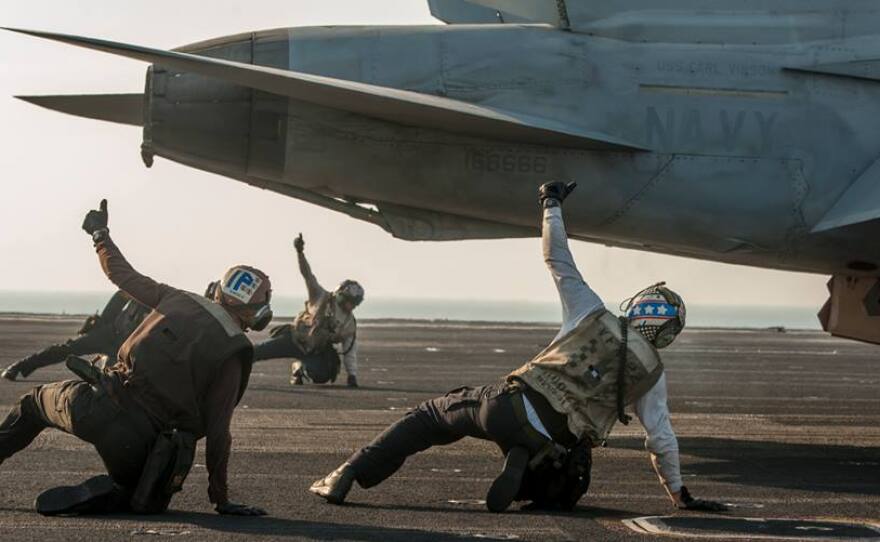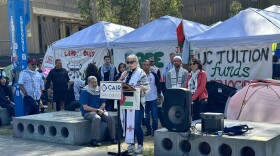The USS Carl Vinson, called "five acres of sovereign U.S. territory" in the Persian Gulf by one Navy admiral, plays a staring role in a New York Times article about the irony of fighting a "desert war" from the floating city that is an aircraft carrier.
Reporter Eric Schmitt is currently aboard the Carl Vinson. He interviewed Navy pilots about the specifics (without getting TOO specific) of their flights.
Turns out, it takes six hours, round trip, for a pilot to complete one mission. The pilots make about 100 flights a day, with roughly 20 of those actual airstrike missions over Iraq and Syria:
The Vinson has steamed to the northern part of the gulf to shorten flight times as much as possible, but it is still 450 miles to Baghdad and much farther to Syria. The F/A-18s burn 5,700 gallons of fuel on a typical mission, and pilots must refuel in midair three or four times.
As Home Post previously reported, the USS Carl Vinson arrived in the Persian Gulf last October to relieve another aircraft carrier, the USS George H. W. Bush, which had been part of Operation Inherent Resolve since June:
F/A-18 jets flying off the Bush carried out the first airstrikes against the Islamic State terrorist group in Iraq.
The Times points out that this latest deployment for USS Carl Vinson stands in a long line of history-making missions for the aircraft carrier:
Some of the first airstrikes of the Afghan war in October 2001 were by jets from the Vinson; nearly a decade later, it was here that Navy SEALs brought Osama bin Laden’s body after the raid in Pakistan, and buried it at sea after religious rites on the lower hangar deck.
If you want to see for yourself what's going on aboard the USS Carl Vinson, check out the Dec. 16 edition of "The 70," a newscast produced by the Carl Vinson's media department:






